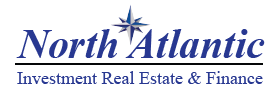The U.S. economy is running on all cylinders right now, which should keep the Federal Reserve on track to continue raising short-term interest rates to prevent it from overheating. While higher borrowing costs typically suppress loan origination, a crucial rollback in bank regulation earlier this year, plus the growing presence of alternative lenders, should keep the commercial lending spigot wide open in Queens.
Buoyed by robust consumer and government spending, gross domestic product – the broadest measure of goods and services produced in the U.S. – grew at a 3.5% annual rate in the third quarter, according to the Commerce Department’s first reading. That’s below the second quarter’s 4.2%, which was the strongest since the third quarter of 2014, but sharply above the first quarter’s 2.2%.
After years of being stifled, banks should become more comfortable about lending due to the partial dismantling of a major impediment: The Dodd-Frank Act. Over the past decade, lenders erred on the side of caution due to oversight stemming from broad and overreaching government regulation, which was put in place as a safeguard in the aftermath of last decade’s recession. Lenders have become more conservative due to the increased reserve requirement imposed against loans considered highly volatile commercial real estate or HVCRE.
Fast forward to May of this year when President Donald Trump signed the “Economic Growth, Regulatory Relief, and Consumer Protection Act,” the most significant rollback of Dodd-Frank regulations since its passage. Put simply, the new law increases the threshold for banks to be considered “too big to fail.” The law relaxes regulations for all but the largest U.S. banks, raising the level at which banks face the tight and extremely costly oversight spelled out in Dodd-Frank to $250 billion in assets, up from the previous threshold of $50 billion. Due to this sizeable increase, banks will likely become much more active in the lending arena.
It should be noted that the Trump administration recently turned their attention to the Volcker Rule, the Dodd-Frank bill’s regulation that created a separation between typical consumer banking from the speculative activity that fueled the financial sector’s instability before the 2008 crisis.
As the economy gained steam this year, so did the investment sales market in Queens. During the first three quarters, Queens saw 456 transactions consisting of 559 properties, totaling approximately $2.88 billion in gross consideration, according to Ariel Property Advisors’ Investment Research Division. Transaction and dollar volume were 6% and 22% higher than the same period in 2017.
For investors, the time appears ripe to acquire land in Queens since prices have become more attractive over time. For the third quarter, development sites averaged $204 per buildable square foot, down 6% from the same period a year earlier. That is also well-below Brooklyn’s and Northern Manhattan third quarter averages of $271 per buildable square foot and $237 per buildable square foot, respectively.
It has naturally become more expensive to finance construction projects. The WSJ prime rate index, used by many banks to price construction loans, reached 5.25% in October, 100 basis points higher than the same month last year. In the past, banks were the clear-cut cost leader for construction loans, but as regulations made banks less competitive, unregulated debt funds were able to gain a significant amount of market share.
Debt Funds Dominate
The future regulatory environment bodes well for Queens developers, but alternative, transitory creditors, such as debt funds and bridge lenders, have significantly sapped their market share in recent years by offering higher leverage and more structured value-add loans with less scrutiny. Unlike traditional lenders, these entities have less oversight and tend to look at a property’s long-term potential and less on the capacity and credit of a borrower.
Credit availability in the debt fund space has mushroomed, creating a progressively competitive market for these lenders, and thus pushing rates down. According to Fed surveys, banks, under pressure to compete, have relaxed their lending standards in recent quarters.
Since Dodd-Frank, large institutional borrowers have increasingly used debt funds in lieu of banks. For example, prior to refinancing with Pacific Western Bank, Normandy Real Estate financed their project at 47-11 Austell Place in Long Island City with a $23.7 million acquisition loan from SL Green Realty Corp. Elsewhere in Western Queens, along the East River waterfront, Cape Advisors financed their acquisition of 30-77 Vernon Blvd with an 18-month bridge loan from Mack Real Estate Credit Strategies.
Expect banks to begin entering this space again in the near future given their recently rediscovered flexibility. While the old guard might be clawing back at their recently relinquished market dominance, the disruption in the value add/construction financing space continues.
Now more than ever, acquiring a seasoned mortgage broker is critical as they can navigate this sea of options for a borrower to attain a holistic financing package most accretive to every project and business plan. For example, Ariel Property Advisors Capital Services Division was recently retained to secure a construction loan at 75% loan to cost. Ariel knew this area of the capital stack was impossible to achieve from banks without expensive mezzanine financing but were able to preliminarily secure the desired loan within the borrower’s interest rate tolerance.
Looking ahead, while interest rates have been on the rise, it has not impeded borrowing activity, so government rollbacks on bank regulation, coupled with copious amounts of alternative lenders, should keep commercial lending active in Queens.
Source:Ariel P.A.

